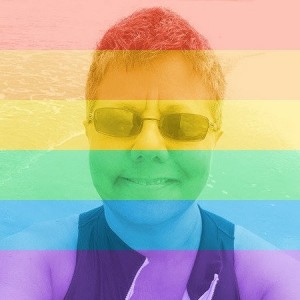Anticipation grew as I sat in a darkened movie theater with my friend Yvonne Kaye, waiting for the film to begin. Ever since I saw the trailer a few months earlier, I knew it was a must-see. Inside Out is a brain and heart child of the creative geniuses at Disney Pixar. The movie has been hailed by clinicians who work with children as a primer into understanding the developing young mind. Having been a therapist for three decades and alive on the planet for five and a half, I am familiar with the importance of emotional fluidity. Does that mean I always give myself permission to experience all the feelz? Nope. I tend more toward glowing, rather than glowering.
The movie begins with the baby’s eye view of her parents (Diane Lane and Kyle MacLachlan) gazing adoringly at their new born daughter Riley (Kaitlyn Dias), calling her their “little bundle of joy,” and then takes the audience on a journey through the tiny tot’s budding years as a happy go lucky kid with friends, fun, hockey and a close bond with mom and dad. We get to see what goes on behind the scenes in Riley’s mind through the anthropomorphized emotions of Joy (Amy Poehler), Anger (Lewis Black), Disgust (Mindy Kaling), Fear (Bill Hader), and Sadness (Phyllis Smith). All seems to be going well in the life of Riley until her parents uproot her from her Minnesota home and trek cross country to San Francisco where a new job awaits her father. When they arrive, she is less than thrilled by the circumstances that await her; from the dingy apartment into which they move, to feeling like a fish out of water in her new school, to missing her BFF, to overhearing how her father’s new job brings with it unexpected stressors. As a result, she is encouraged by her well meaning mother to maintain her happy persona.
Those in Riley-Central are busily working the controls, headed up by the predominating emotion of Joy. It is an exhausting job keeping Riley happy. She does her best to manage the other emotions; especially the literal and figuratively blue self deprecating Sadness who inadvertently touches Riley’s memories and dims the previously bright light. These are symbolized by variously hued marbles that match the colors of the characters- red for anger, green for disgust, yellow for happiness, blue for sadness, purple for fear. Each time that happens, Joy attempts to jolly everyone into a more positive state so that Riley can maintain cheerfulness. It is when something goes awry as Joy and Sadness get accidently sucked out of the double entendre’ named Headquarters, that for the rest of the film, they are on a mission to return and save Riley from falling into a pit of despair from which Joy fears she will never emerge. The other emotions are left to fend for themselves in their absence. Dark and light, loss and love, chaos and calm dance together, sometimes in precarious teeter tottering balance. An imaginary friend named Bing Bong, voiced by Richard Kind adds comic appeal as the wildly pink mish mosh critter who cries hard candy and rides a red wagon with broomstick engines fueled by singing a special song he and Riley created together helps to get Joy and Sadness back on track.
One of the most enjoyable aspects of the film was observing the ways in which each of the characters, from mom and dad, to Riley’s teacher and the other kids with whom she interacted had all of their own emotions personified and interacted with each other in the same way that hers did. So as not to spoil the ending, I will leave the rest to your own vivid imagination.
As I watched the movie, I became acutely aware of my emotional landscape as well. In my life, I had let Joy run the show nearly all of the time, while shuttling aside the other less savory emotions, that frankly, I have sometimes held in contempt and with impatience. I repressed sadness in the service of not wanting to make anyone else feel it. I pushed back fear since I wanted to bravely take on the world. I barricaded the door behind which anger dwelled, because I had seen the destruction it wreaked in the world. I do my best to avoid stepping into anything literal or figurative that my son used to refer to as ‘asgusting’ when he was young. It has been when I have fully embraced myself in my entirety that I can safely arrive back home.
Inside Out is an insider’s view of the emotional landscape through which we all traverse.

